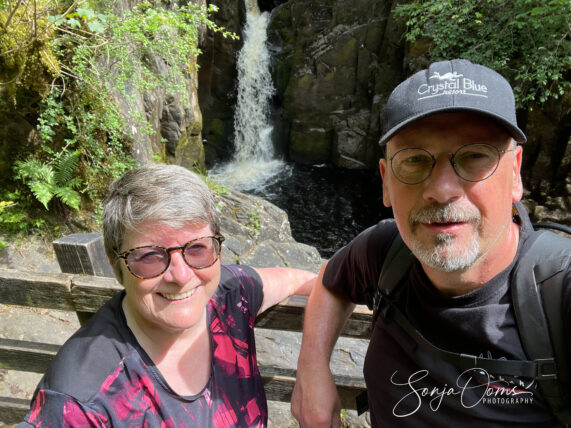Fellsman steam hauled train on the Ribblehead viaduct.
When we planned a trip to the UK for the first time, back in 2019, our longtime British friends from Suffolk took us on a week long journey crisscrossing the Yorkshire Dales. And that was literally all it took to make us fall in love with the great UK outdoors.
So much happened in the meantime: we lost family and friends to Covid, lock-downs came and went, our respective governments were competing with each other who could invent the craziest C-19 measures, we were unable to go diving in our beloved Coral Triangle for almost three years now, … But in January 2020 we also relocated from Belgium to the UK, and did some serious traveling in England and Wales since then. Just read the blog-posts and you’ll agree.
And no, we’re not going to make a “best of” or a ranking of our most favorite places. They’re all different and they all more than deserve a visit.
Driving around the Dales, there’s one thing you’re almost guaranteed to spot : sheep! They are iconic and such a strong feature of the Dales, a Swaledale sheep’s head is used as the emblem of the Yorkshire Dales National Park (by the way there are thirty times more sheep in the Yorkshire Dales than people: more than 600,000 sheep!)
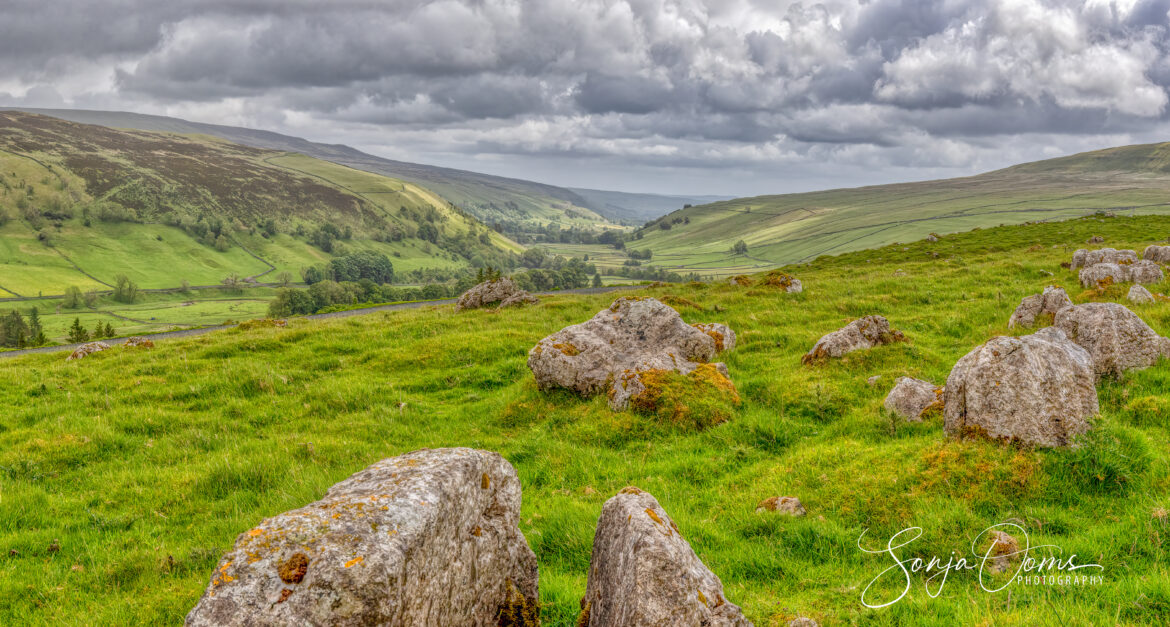
Littondale looking towards Malham Tarn & Cove.
About the Dales then. The Yorkshire Dales National Park was established in 1952 and it’s huge: 2,179 km². This is an age old landscape, stretching for miles and miles. Sculpted by gigantic glaciers. Admire almost endless hills and deep glacial valleys, crowned with beautifully sculpted limestone scars, heather moorland and barren limestone pavements. Erosion by glacier ice, weathering of limestone, shale, sandstone and millstone grit laid down about 300 million years ago has created the scenery we see today.
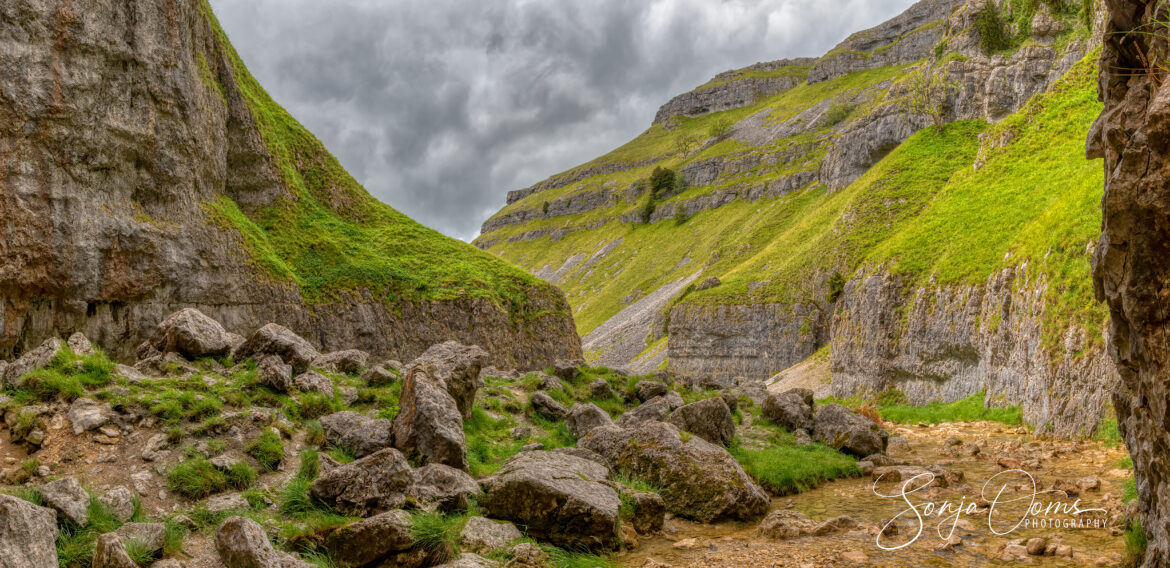
Gordale Scar one of the jewels in the crown of the National Park, an awesome hidden ravine.
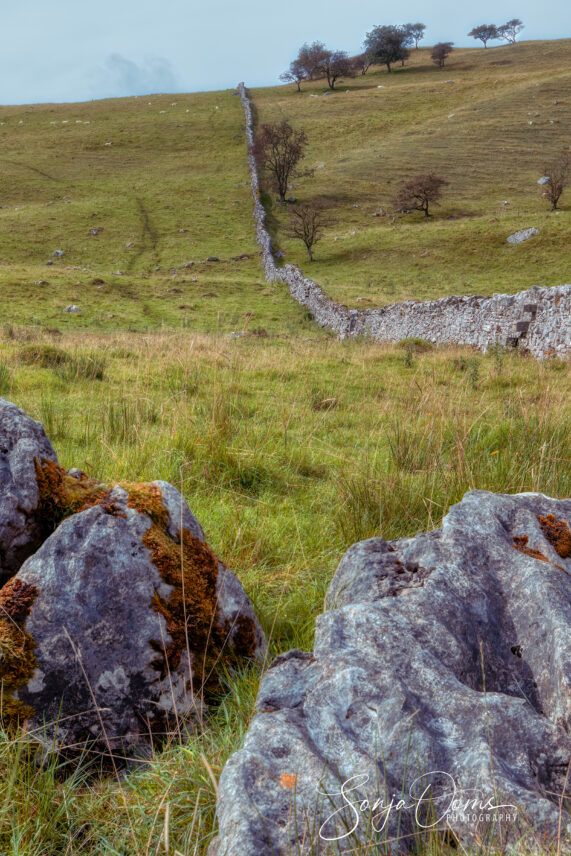
There are an extraordinary 7000 miles of dry stone walls dividing the landscape into small manageable meadows like a patchwork quilt. Not all of them are in tip-top condition but most are well maintained. The first ‘dry’ (no mortar is used) stone walls were probably built centuries ago by early farmers clearing the land for cultivation. Some walls are really thicker than might seem necessary, just because they were built in very stony areas. Most walls are built to mark boundaries or mark land ownership, and limit movement by the many sheep. Some of them date back to the 13th century and are believed to have been built to deter wolves! Some were built around 200 years ago by French prisoners of war taken from Napoleon’s army. Large block foundations to a wall are usually even older, dating back to the times of the Knights Templar. There’s plenty of hidden history in those miles and miles of walls!
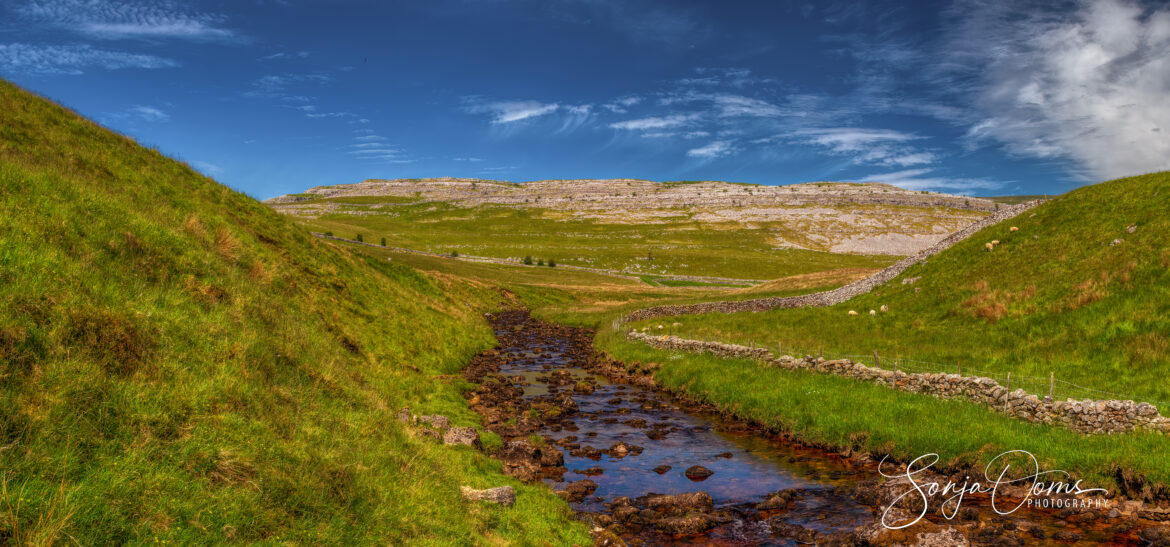
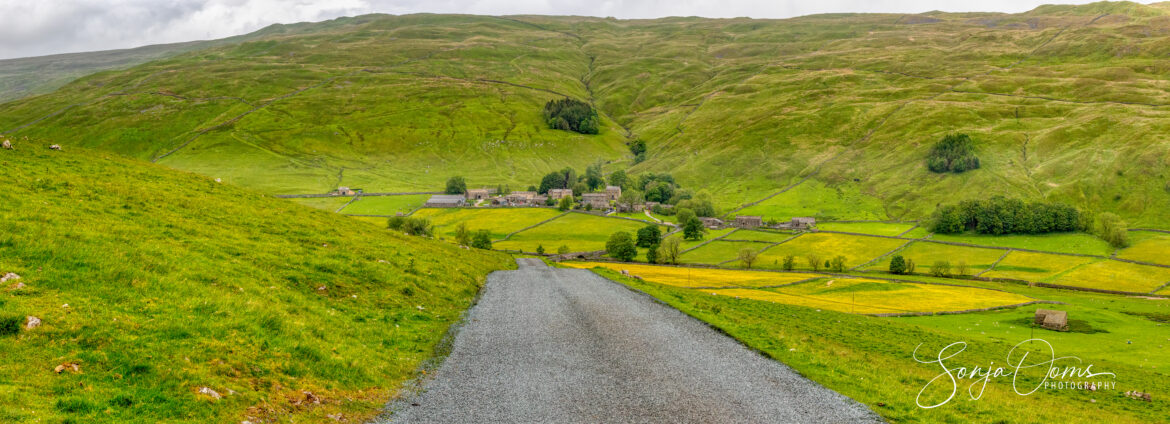
Charming little cottages and farmhouses scatter the landscape and every few miles or so you can discover a beautiful stone built village or town with the typical delightful British pub for a pint or a traditional pie.
This is James Herriot Land. There are not many book series or TV shows that have traveled the world as ‘All Creatures Great and Small’ did. The tales of James Herriot, a local vet who lived and worked in the Yorkshire Dales.
The show, based on the books of James Herriot, originally ran on the BBC from 1978 to 1990. Pictured (left to right): Peter Davison, Robert Hardy, Carol Drinkwater, Christopher Timothy in 1983
There is also little doubt that Tolkien’s Lord of the Rings landscapes are in some part inspired by the Yorkshire Dales. And famous artists that painted the Dales include Turner and Wainwright amongst many more.
Handmade in Yorkshire!
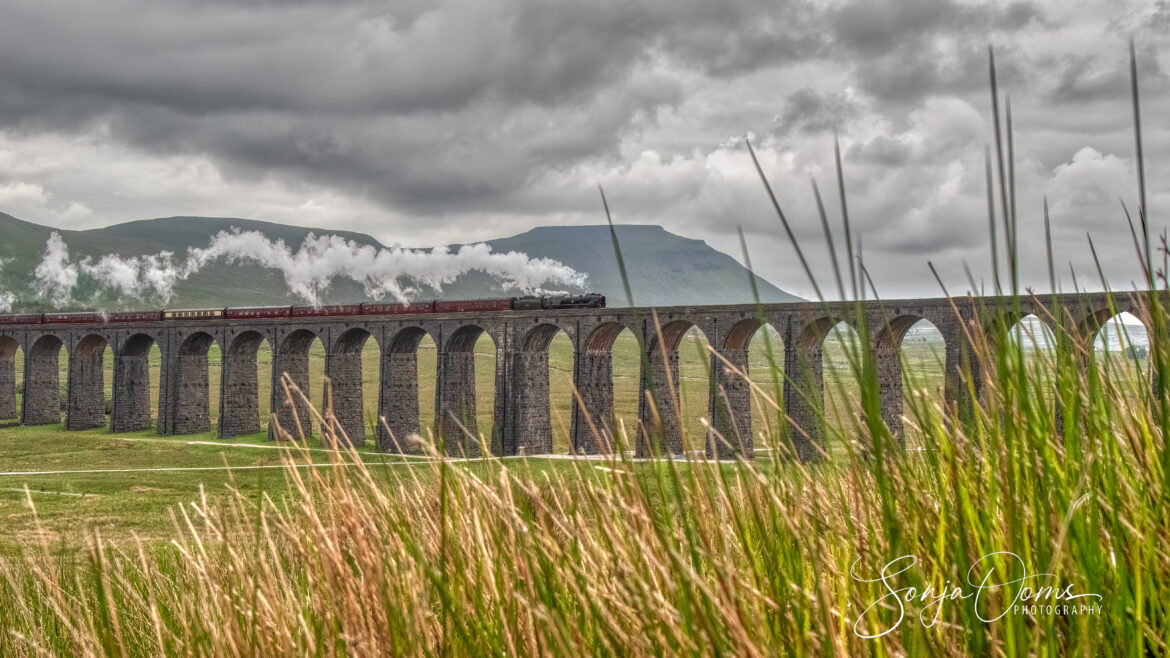
Pendle Dalesman steam hauled train.
Straddling the rough, boggy ground of Batty Green, Ribblehead Viaduct is a truly majestic sight (24 arches, 104 ft high, 440 yards long) in this quiet corner of the Yorkshire Dales. More than one hundred men were killed during the construction of the viaduct – a not unusual number for the time. Unions were being established around 1870 and one can understand why. There was little or no attention for the safety of the labor, what equipment there was in 1870, wooden cranes and gunpowder used in blasting, was quite unstable. In those long gone days, unions served a more noble purpose than annoying a working class family wanting to go on a long deserved holiday, only to find out that trains are not driving, planes are not flying courtesy of those same unions.
Take your time gazing around at the bleak but beautiful moorland stretching outwards and upwards to the Three Peaks (Pen-y-ghent, Ingleborough and Whernside) which you can see in the background.
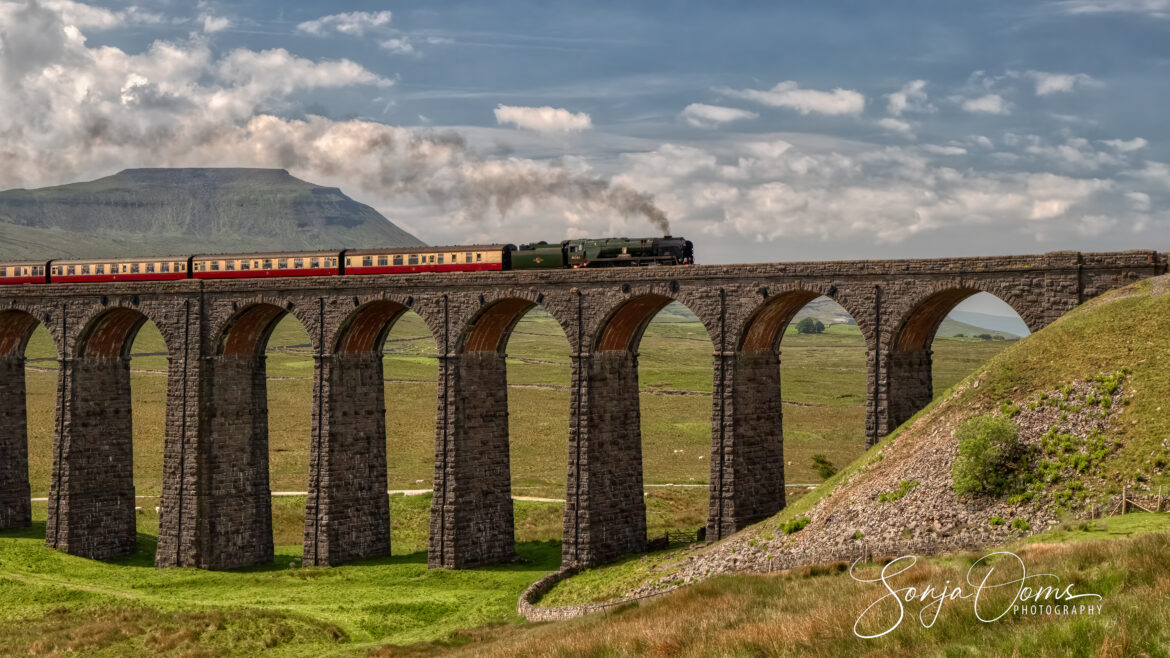
Fellsman steam hauled train
When we were in the Dales, we perfectly timed our presence so we were very privileged to witness not one but two beautifully restored steam hauled trains in full action. This is the ‘Fellsman’ train crossing the masterpiece of Victorian engineering, the magnificent 24 arch viaduct at Ribblehead (built 1870). Steam engine is the No. 34046 ‘Braunton’ built in 1946 and the day before we saw the Pendle Dalesman chugging uphill and over the viaduct.
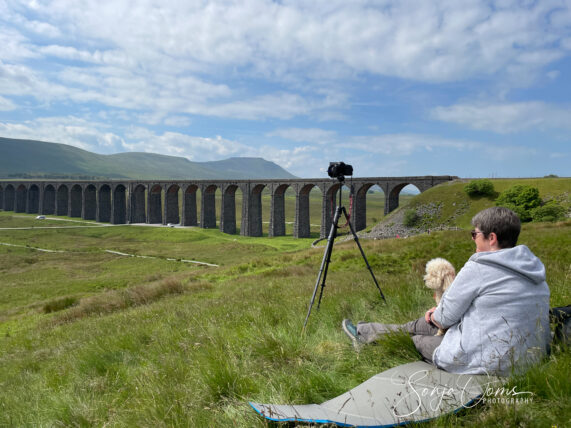
Armed with patience, we found the perfect spot to wait and be on hand for the exiting and typical steam train whistle announcing the arrival of the exquisitely restored trains. Goosebumps moments indeed!
But of course before hiking onto the moors, always check the local weather forecast at the Station Inn, where you can also taste a traditional Dale pie and a pint afterwards.
Traditionally I end with a word about where we stayed. And what a gem this was again! Gamekeepers Cottage. This cottage is just perfection and one could only wish that all self catered cottages in the UK would live up to the same high standards. It is superbly located, quiet, … don’t bring anything but yourself – all the rest is available, cozy, … all anyone could wish for in a self-catered cottage. And the communication with Louise is super fast and efficient. Do not hesitate for a second whenever this cottage is available if you want to stay near the Dales national park with Ingleton, Malham, Ribblehead, Bolton, etc. … within easy reach. Look up the cottage, just follow the link HERE
A word also about the really important stuff: food! It’s a miracle we’re still alive, that’s how bad we cook. We would accidentally make lava trying to cook eggs. So believe me pubs and restaurants are important for our survival 🙂 When you come back hungry from a long day of walking along the coast path, head for the dog friendly The Plough. This Inn is just minutes away from the cottage and serves excellent dinners, ice cold beers and the “full English” with a big smile from the friendly staff.
The Yorkshire Dales are so impressive, rich and varied that it would be too boring for me to describe and show it all in one post. So two more blog posts about the Dales are in the making, watch this space.
